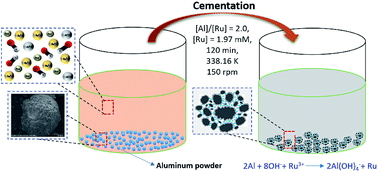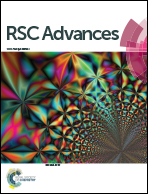Highly efficient recovery of ruthenium from integrated circuit (IC) manufacturing wastewater by Al reduction and cementation
Abstract
Ruthenium (Ru) is a rare-earth metal, which is employed widely in metal-processing industries. This study recovered Ru from the wastewater of an IC foundry by cementation using metallic aluminum (Al) powder as the sacrificial agent. Ru ions were efficiently reduced to the metal and coagulated with the derived aluminum hydroxide flocs. Experimental parameters included the particle size of Al, molar ratio of Al to Ru, initial Ru concentration and operation temperature. The recovery rate reached 99% under these conditions: particle size Al powder = 88–128 μm, Al/Ru molar ratio = 2.0, initial Ru = 200 mg L−1, temperature = 338.16 K, reaction time = 120 min, stirring speed = 150 rpm. The cemented Ru over Al powder was spherical with a rough surface. Kinetic modelling suggested that the diffusion of Ru through the ash layer of Al powder controlled the reaction rate with an activation energy of 40.75 kJ mol−1. A brief cost analysis demonstrated that the cementation of Ru yielded a profit of $0.180 per 0.1 m3-wastewater.



 Please wait while we load your content...
Please wait while we load your content...